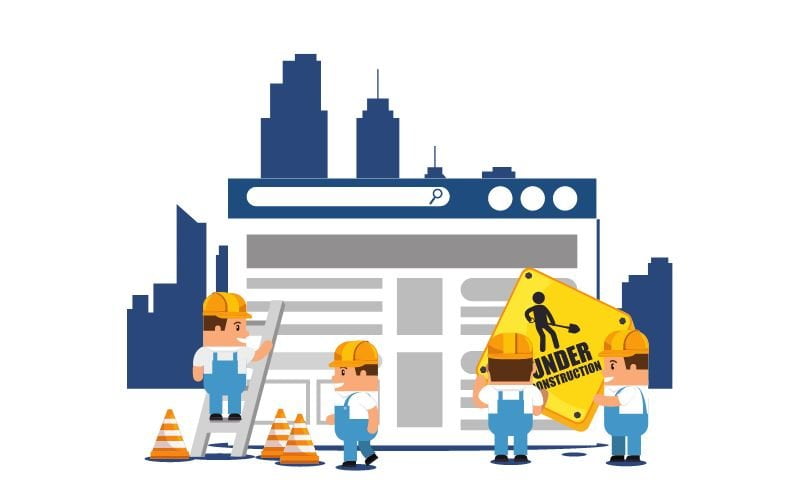Here are some suggestions by most of the Website Design Company you can keep in mind as you prepare the upcoming version of your website.
#1 Analyse your current site
An extensive audit of your current website is one of the best things you can do to get started.
An evaluation will give you a bird’s eye view of all the resources you have at your fingertips and enlighten you as to what is currently working well and what is not on your website.
During a website audit, you should:

Analyze the current site performance
You can understand what pages users find useful, what pages might be missing, and what pages you can remove by analyzing key metrics like traffic, conversions, bounce rate, and time on page.
Conduct a website audit for SEO
This type of audit’s objective is to find any problems that might be harming your organic search performance. Technical problems, like how quickly the page loads, or content-related problems, like missing keywords, can both cause this.
Review the current content
Many companies still believe their website is all about them, which is a mistake. In reality, customers want to know one thing: “Can your business solve my problem?”. However, the majority of their content is geared toward telling users how fantastic and unique they are.
#2 Recognize the user’s journey
User journey diagrams show the various steps a user takes to make a purchase, focusing on the different responses and feelings that might be experienced at each stage.
Implement consumer feedback
There are several approaches you can take to find the solution to this. One way, for instance, is to launch a feedback form to your customers and inquire about their experiences:
- Why did you choose to buy product X?
- Was there anything on the website that annoyed you?
- Exactly how did you get to page X?
After all, the objective is to minimize friction to give prospects a quicker path to conversion.
Employ user testing
By doing this, you’ll be able to observe firsthand how a potential customer uses your website and identify any problems you need to address.
Another excellent way to find areas for quick optimization is to use a heat mapping tool like Hotjar or Lucky Orange. By color-coding the various elements on a page that receive the most and least interaction, these tools provide you with a more visual understanding of how users interact with your website.
You can make your redesign more effective by concentrating on the user journey and removing any obstacles.
#3 Set Clear goals
Success is critical with the amount of money and effort that goes into a website redesign. You can do that by establishing reasonable goals for your site that it can use as a guide and benchmark.
You should have a good idea of the parts of your site that need improvement based on what you learned during your site audit. This is an excellent place to begin developing your goals.
#4 Set up your plan of action
With a solid understanding of your current website’s performance and a set of well-defined goals, you’re ready to develop a strategy for achieving those objectives.
What elements should be a part of your plan
- Effective web design is about assisting and delivering the intended message. You must be able to articulate your message clearly in order to do that.
- Creating an ideal user flow will assist you in thinking about how people interact with your website, from first-time visitors to qualified leads.
#5 Evaluate and revise your brand template
When people hear the name of your business or see your logo, they immediately think of your brand. It is who you are as a company and what you stand for.
With the help of a brand style guide, you can make sure that your intended and actual messages are being communicated in a consistent manner. It’s a set of rules that everyone can follow to understand and replicate your brand.
#6 Find motivation and research the competitors
Investigate in-depth two or three websites belonging to rival companies as well as one or two websites from a different sector. This will show you the industry norms as well as areas where you can make some changes.
You can now decide on what visual components and styles you want to use after gathering these assets.
#7 Create quality content
Make sure you’re always looking for ways to inform your audience when you’re writing your content.
By listing the top 25 inquiries you frequently receive from customers about your goods or services, you can easily assess how well you’re educating visitors. Make sure the pages on your new website address those queries.
Remember that while a person’s first impression of a website is based on visuals, it is strong and useful content that keeps them engaged and wanting more if you are ever tempted to forego the content-first approach.
Remember our recommendation the next time you need to redesign your website. By adhering to them, you’ll be well on your way to developing a website that works well, looks fantastic, and accomplishes your objectives.
After getting your website redesigned hire a Digital Marketing Company to take care of your online visibility.
Have fun redesigning!
